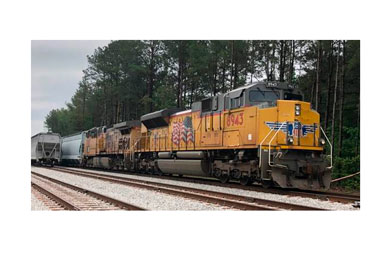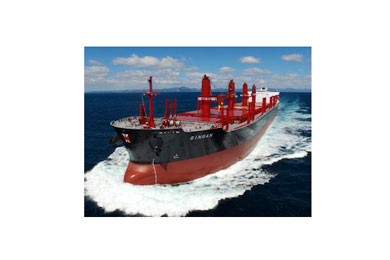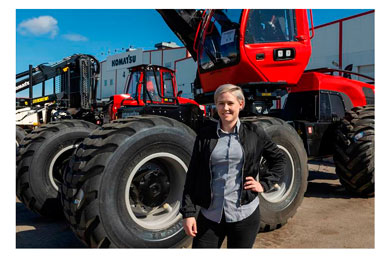New Chairman of the Board of Directors for Ponsse Plc – Marko Mattila joins the company’s Management Team
Ponsse Plc has appointed a new Chairman of the Board of Directors. At its organising meeting held on 27 May, Ponsse’s Board of Directors elected Jarmo Vidgrén (44) as its Chairman. Juha Vidgrén (49), Chairman of the company’s Board of Directors since 2010, will continue as an ordinary member of the Board. At the same time, Marko Mattila will join the company’s Management Team.
“I have chaired our company’s Board of Directors for ten years, and it’s now time to bring fresh energy to the Board. Jarmo’s vast experience, starting from 1997, in various positions in Ponsse’s customer interface strengthens our Board of Directors. I will continue as an ordinary member of the Board and work daily in the field of HR and public affairs, just like before”, says Juha Vidgrén, member of Ponsse Plc’s Board of Directors.
Jarmo Vidgrén was appointed to Ponsse Plc’s Board of Directors at the Annual General Meeting held 27 May. Before his election as the Chairman of the Board of Directors, he worked as the Sales and Marketing Director and Deputy CEO, being in charge of Ponsse’s global sales and after-sales services since 2008. As a result of this change, all head owners of the family-owned company, four sons of Ponsse’s founder Einari Vidgrén, are members of the company’s Board of Directors. Mammu Kaario will continue as Vice Chair of the Board of Directors.
“The Chairman of Ponsse’s Board of Directors has traditionally worked close to the operational management and has highlighted the company’s customer-driven approach. These changes streamline our operations and clarify roles in the organisation and the owner family”, says Jarmo Vidgrén, chair of Ponsse Plc’s Board of Directors.
CFO Petri Härkönen will act as the company’s Deputy CEO.
Marko Mattila appointed to Ponsse Plc’s Management Team
Marko Mattila (46), forest engineer, MBA, will replace Jarmo Vidgrén as the Sales and Marketing Director, starting from 1 June 2020. At the same time, Mattila will start as a member of Ponsse Plc’s Management Team.
Marko Mattila has vast experience in the operation and development of Ponsse’s network. He will transfer to his new position from the position of the Director, retail network development. Mattila has worked at Ponsse Plc since 2007. In addition, he has worked as the Managing Director of Ponsse North America Inc, Ponsse’s subsidiary in the US, and Ponsse Latin America Ltda, Ponsse’s subsidiary in Brazil. He has also worked as an Area Director responsible for North America´s dealer network, Baltic countries and Chile.
Marko Mattila will be responsible for Ponsse Plc’s sales, marketing and maintenance throughout the Ponsse network. In the Ponsse retail network, Mattila will be responsible for retailers operating under Ponsse’s subsidiaries.
Marko Mattila will be located in Jyväskylä, Finland and he will report to Juho Nummela, President and CEO of Ponsse Plc.
Jussi Hentunen to lead retail network development
Jussi Hentunen (37) will replace Marko Mattila as the Director, Dealer development, starting from 1 June 2020. Hentunen will transfer to his new position from the position of the Director, Used Machines Global Business. He has worked at Ponsse in various sales, marketing and used machine positions since 2004.
Jussi Hentunen will be located in Vieremä, and he will report to Sales and Marketing Director Marko Mattila.
Vieremä, 27 May 2020
Further information:
Jarmo Vidgrén, Chairman of the Board of Directors of Ponsse Plc, tel. +358 40 519 1486
Juha Vidgrén, Member of the Board of Directors of Ponsse Plc, tel. +358 40 518 6286
Juho Nummela, President and CEO of Ponsse Plc, tel. +358 40 0495690
Marko Mattila, Sales and Marketing Director of Ponsse Plc starting from 1 June 2020, tel. +358 40 059 6297
Ponsse Plc specialises in the sale, production, maintenance and technology of cut-to-length method forest machines and is driven by a genuine interest in its customers and their business operations. Ponsse develops and manufactures sustainable and innovative harvesting solutions based on customer needs.
The company was established by forest machine entrepreneur Einari Vidgrén in 1970 and has been a leader in timber harvesting solutions based on the cut-to-length method ever since. Ponsse is headquartered in Vieremä, Finland. The company’s shares are quoted on the NASDAQ OMX Nordic List. This year, the company celebrates its 50th anniversary.










